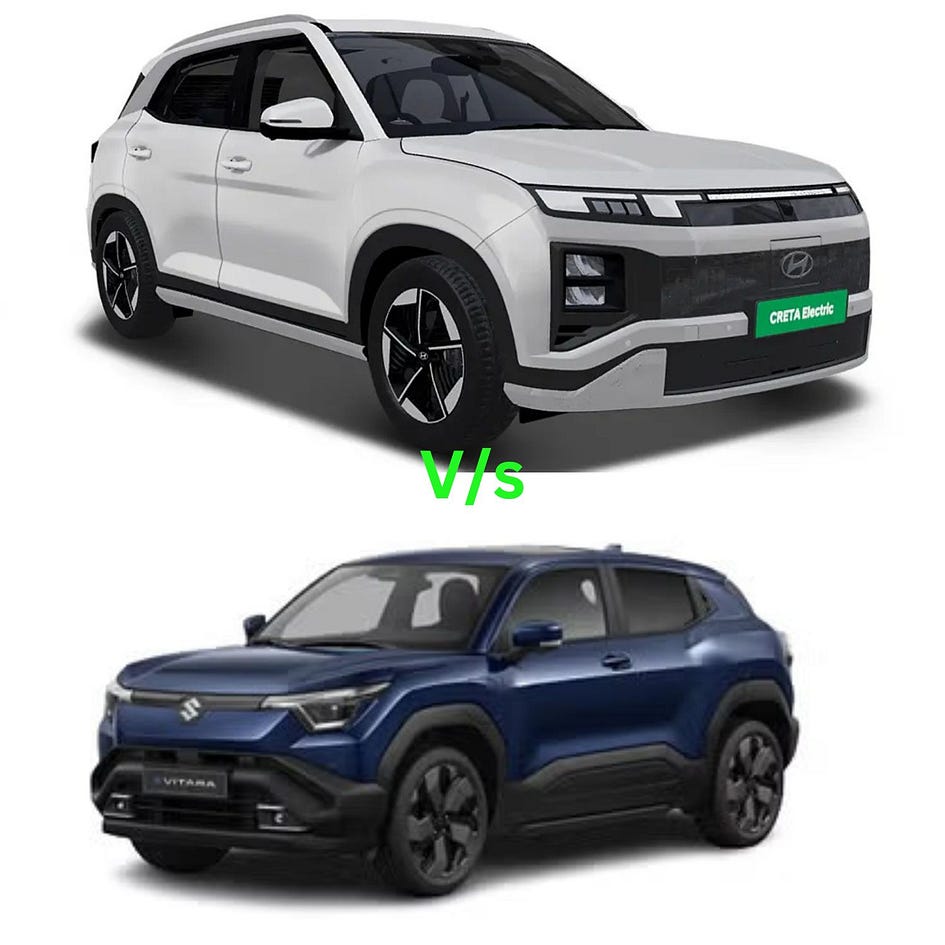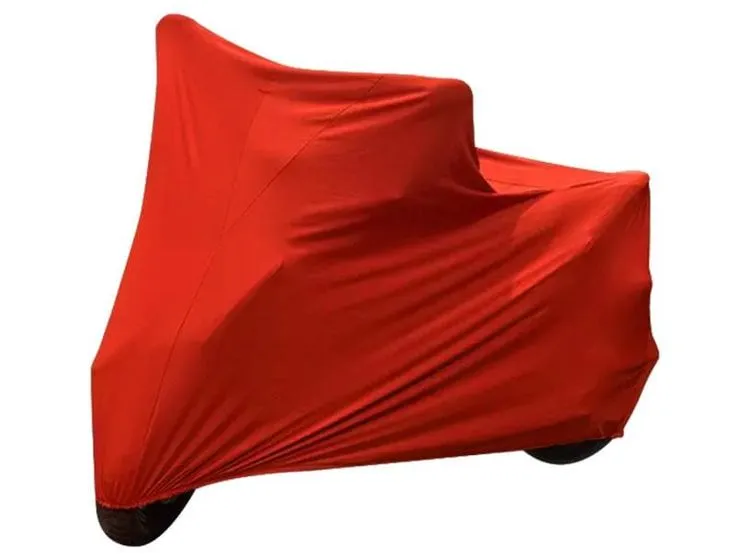Hyundai Creta Electric vs. Maruti Suzuki e-Vitara: The Ultimate Compact Electric SUV Showdown!

The electric vehicle (EV) revolution is in full swing, and automakers are stepping up their game to offer the best options for consumers. The compact SUV segment, one of the most popular categories in India, is now embracing electrification. Two major players set to compete head-to-head in this space are the Hyundai Creta Electric and the Maruti Suzuki e-Vitara. Both models aim to provide cutting-edge technology, impressive performance, and eco-friendly driving. But which one stands out? Let’s dive into a detailed comparison of these two electric SUVs.
1. Design & Aesthetics
When it comes to design, both Hyundai and Maruti Suzuki have made significant efforts to make their EVs visually appealing.
- Hyundai Creta Electric: The Creta Electric retains the iconic look of its ICE counterpart but gets a futuristic touch. Expect a closed-off grille, sleek LED headlamps, and aerodynamic enhancements to improve efficiency. The signature Creta stance remains, making it an attractive SUV with a modernized electric twist.
- Maruti Suzuki e-Vitara: The e-Vitara will be built on Suzuki’s Global C platform with unique EV-centric design elements. A more sculpted front fascia, distinct LED lighting, and aerodynamic wheels are expected to set it apart. Given Maruti Suzuki’s focus on mass appeal, the design will likely be functional yet stylish.
Winner: Hyundai Creta Electric (for its premium and futuristic design)
2. Performance & Range
Performance is a crucial factor for EVs, especially when it comes to driving range and power output.
- Hyundai Creta Electric: Reports suggest that the Creta Electric will feature a battery pack of around 45–50 kWh, offering a range of approximately 450–500 km on a single charge. The powertrain could deliver close to 140–150 bhp, ensuring a smooth and dynamic driving experience. Hyundai’s expertise in EVs (via the Kona Electric and Ioniq series) ensures well-optimized performance.
- Maruti Suzuki e-Vitara: The e-Vitara is expected to be equipped with a 48–50 kWh battery pack, delivering a range of around 400–450 km. The power output could be slightly lower than the Creta Electric, hovering around 120–130 bhp. However, Maruti Suzuki’s tie-up with Toyota for hybrid and electric technology could enhance efficiency and battery management.
Winner: Hyundai Creta Electric (for its slightly higher power and range)
3. Charging Capabilities
Charging infrastructure and battery technology play a vital role in an EV’s convenience.
- Hyundai Creta Electric: Expected to support fast charging up to 100 kW, which can charge the battery from 10–80% in approximately 40 minutes. Standard AC charging via a home charger could take 6–8 hours.
- Maruti Suzuki e-Vitara: Maruti Suzuki may offer fast charging up to 80–100 kW, allowing a 10–80% charge in 45 minutes. AC charging at home will likely take around 7–9 hours.
Winner: Hyundai Creta Electric (slightly faster charging speed)
4. Features & Technology
Both SUVs will be packed with smart features, but let’s compare what they bring to the table.
- Hyundai Creta Electric: Hyundai is known for offering a feature-rich cabin. Expect a fully digital instrument cluster, a 12.3-inch touchscreen infotainment system, connected car technology, ADAS (Advanced Driver Assistance Systems), wireless charging, and ventilated seats. Hyundai’s Bluelink connectivity will also enhance remote access and smart controls.
- Maruti Suzuki e-Vitara: Maruti Suzuki has been improving in the tech department. The e-Vitara could feature a 10.25-inch infotainment system, semi-digital instrument cluster, wireless connectivity options, ADAS features, and premium upholstery. While Maruti is catching up, Hyundai still leads in high-end technology integration.
Winner: Hyundai Creta Electric (for a more premium and tech-savvy experience)
5. Safety & Build Quality
Safety is a major concern for Indian consumers, and both brands have made efforts to improve their safety credentials.
- Hyundai Creta Electric: Expected to be equipped with 6–8 airbags, electronic stability control (ESC), ABS with EBD, and Level 2 ADAS features, including adaptive cruise control, lane departure warning, and automatic emergency braking. Hyundai’s recent focus on structural strength adds to its safety appeal.
- Maruti Suzuki e-Vitara: Maruti Suzuki has been working to improve safety, but historically, its cars have lagged in build quality. The e-Vitara is expected to come with 6 airbags, ESC, ADAS, and reinforced body structure, but Hyundai’s track record in safety might give it the edge.
Winner: Hyundai Creta Electric (for a better safety package and global crash test standards)
6. Price & Value for Money
Pricing will be a crucial factor for buyers in India, where affordability plays a significant role in purchasing decisions.
- Hyundai Creta Electric: Expected price range: ₹22–26 lakh (ex-showroom)
- Maruti Suzuki e-Vitara: Expected price range: ₹20–24 lakh (ex-showroom)
Maruti Suzuki’s pricing is likely to be slightly lower, making it a more accessible option for a larger audience. However, Hyundai’s additional features and performance enhancements justify the premium pricing.
Winner: Maruti Suzuki e-Vitara (for better affordability)
Final Verdict: Which One Should You Buy?
Both the Hyundai Creta Electric and Maruti Suzuki e-Vitara offer compelling features, eco-friendly credentials, and exciting performance. However, choosing between them depends on your priorities:
- If you prioritize premium features, higher range, advanced safety, and faster charging, the Hyundai Creta Electric is the better choice.
- If you’re looking for a more affordable option with solid performance, decent range, and reliable brand value, the Maruti Suzuki e-Vitara is a strong contender.
As India’s EV infrastructure continues to evolve, both these models will play a significant role in shaping the future of electric mobility in the compact SUV segment. No matter which one you choose, the transition to electric driving is a step toward a greener and more sustainable future!
Which one would you pick? Let us know in the comments!

Comments
Post a Comment